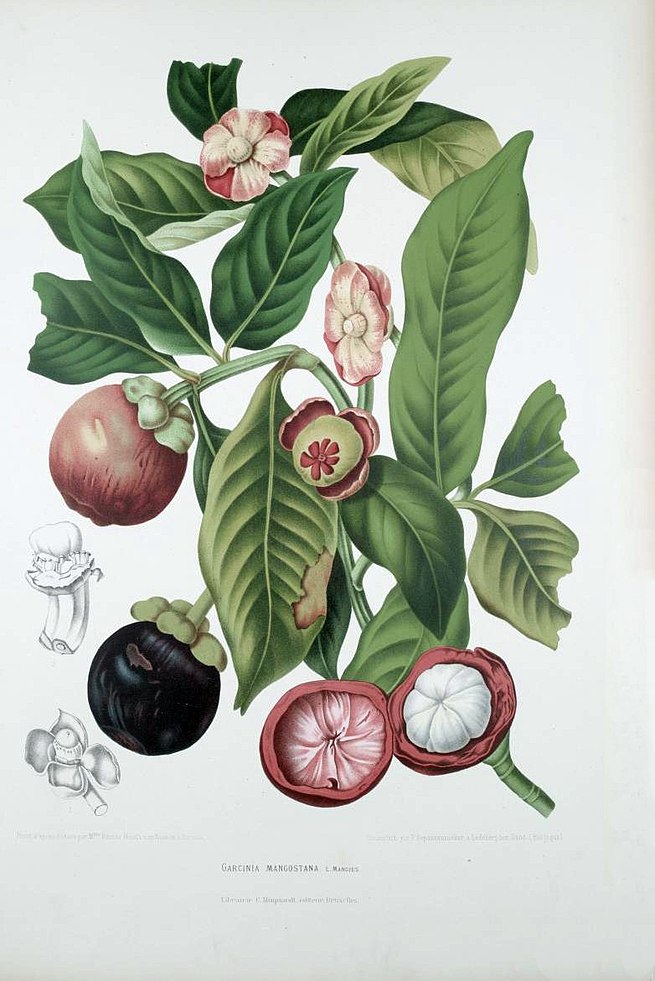
-
Mangosteen
Mangosteen (Garcinia mangostana), also known as the purple mangosteen, is a tropical evergreen tree believed to have originated in the Sunda Islands of the Malay archipelago and the Moluccas of Indonesia. It grows mainly in Southeast Asia, southwest India and other tropical areas such as Colombia, Puerto Rico and Florida, where the tree has been introduced. The tree grows from 6 to 25 m (19.7 to 82.0 ft) tall. The fruit of the mangosteen is sweet and tangy, juicy, somewhat fibrous, with fluid-filled vesicles (like the flesh of citrus fruits), with an inedible, deep reddish-purple colored rind (exocarp) when ripe. In each fruit, the fragrant edible flesh that surrounds each seed is botanically endocarp, i.e., the inner layer of the ovary. Seeds are almond-shaped and -sized.
Mangosteen belongs to the same genus as the other, less widely known, such as the button mangosteen (G. prainiana) or the charichuelo (G. madruno).
-
Kokum (noun)
, a plant in the mangosteen family with culinary, pharmaceutical, and industrial uses.
-
Mangosteen (noun)
A tropical fruit of the tree genus Garcinia.
-
Mangosteen (noun)
The tree on which the fruit grows.
-
Mangosteen (noun)
a tropical fruit with sweet juicy white segments of flesh inside a thick reddish-brown rind.
-
Mangosteen (noun)
the slow-growing Malaysian tree which bears the mangosteen.
